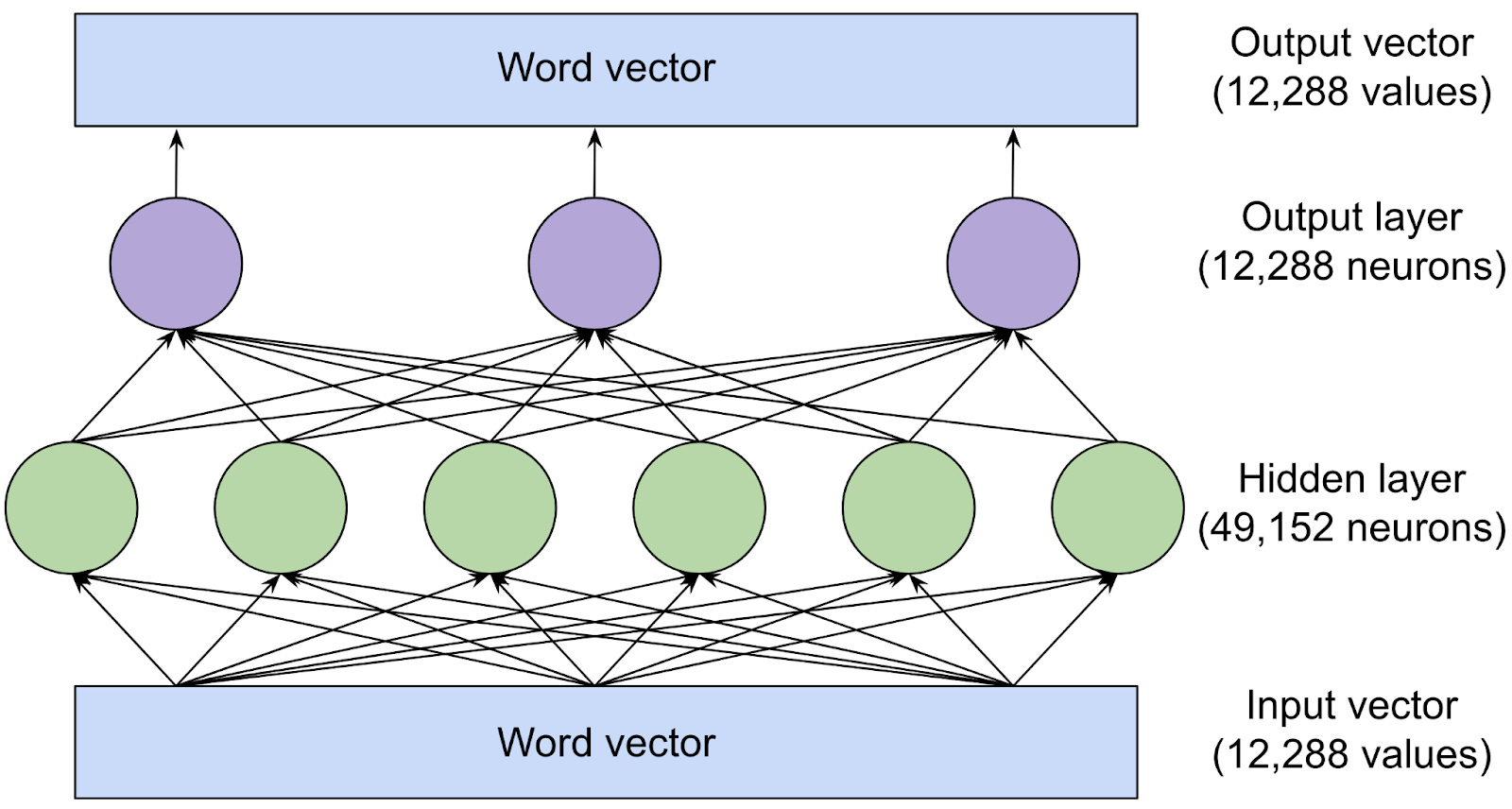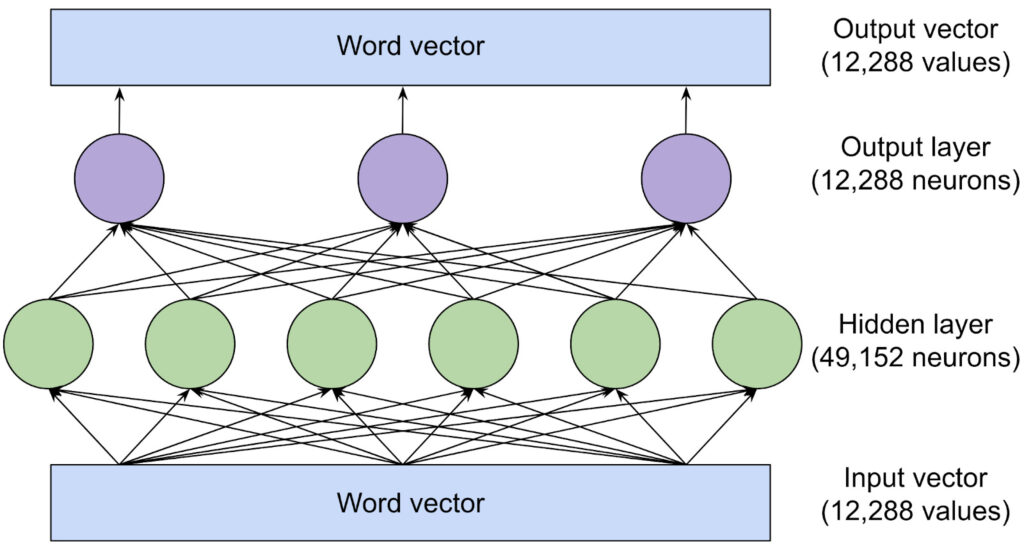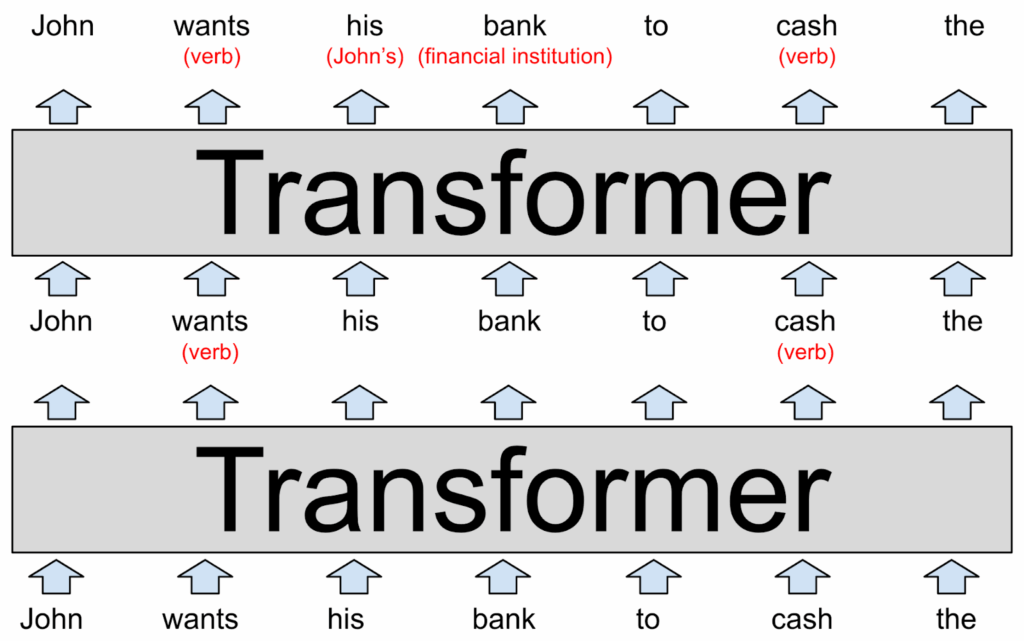The world of Artificial Intelligence (AI) is buzzing, and it feels like every day brings a new breakthrough. From generating stunning images to composing music, AI’s capabilities are expanding at an incredible pace. But if you’ve been following the news, you’ve undoubtedly heard about something called a “Large Language Model,” or LLM. Tools like ChatGPT, Google Bard, and Microsoft Copilot are making headlines, showcasing their ability to understand and generate human-like text. So, what exactly is a Large Language Model (LLM)? Explained in simple terms, it’s a revolutionary type of AI that’s transforming how we interact with technology and information. At AskByteWise, our mission is to make complex tech simple, and that’s precisely what we’ll do as we dive into the fascinating world of LLMs together. By the end of this guide, you’ll have a clear understanding of what LLMs are, how they work, and why they’re such a game-changer.
What is a Large Language Model (LLM)? Explained in Simple Terms: The Core Concept
Imagine a super-smart digital librarian who has read almost every book, article, and website ever published. This librarian doesn’t just store information; they understand the nuances of language, how words fit together, the context of sentences, and even the subtle meanings behind expressions. They can then use this vast knowledge to answer your questions, write essays, summarize documents, or even generate creative stories – all in a way that sounds incredibly human.
That, in essence, is a Large Language Model (LLM).
Let’s break down the name:
- Large: This isn’t just a catchy adjective. It refers to two key things:
- Massive Training Data: LLMs are “trained” on colossal amounts of text data – think trillions of words pulled from the internet, books, academic papers, conversations, and more. This huge exposure allows them to learn the intricate patterns, grammar, facts, and styles of human language.
- Numerous Parameters: Parameters are like the internal “knobs and dials” or “settings” within the model that allow it to make decisions and generate text. Modern LLMs can have billions, even trillions, of these parameters. More parameters generally mean a more complex, capable, and “knowledgeable” model.
- Language: This is their primary domain. LLMs are specifically designed to understand, process, and generate human language. They excel at tasks like translation, summarization, question-answering, and creative writing.
- Model: In AI, a “model” is a computer program that has been trained to perform a specific task. Think of it as a specialized tool that learns from data to make predictions or generate outputs. In the case of LLMs, the task is language-related.
In its simplest form, an LLM is a sophisticated computer program that uses advanced machine learning techniques to understand and generate human-like text by predicting the most probable next word in a sequence. It doesn’t “think” or “feel” like a human, but it’s incredibly good at pattern matching and mimicry based on its training data.
ByteWise Tip: Think of an LLM as the ultimate “predictive text” engine. When you type on your phone and it suggests the next word, that’s a tiny, simple version of what an LLM does, but on an epic, almost unimaginable scale and complexity.
Unpacking the “How”: How Do Large Language Models (LLMs) Actually Work?
Understanding what is a Large Language Model (LLM)? Explained in Simple Terms also requires a peek under the hood at how these digital marvels function. It’s not magic, but a clever combination of data, algorithms, and immense computational power.
The Neural Network Foundation: A Digital Brain
At the heart of every LLM is something called a neural network. You can think of a neural network like a digital brain, albeit a highly simplified one. It’s a complex system of interconnected “nodes” or “neurons” (like brain cells) arranged in layers.
- Input Layer: This is where your prompt or question enters the model.
- Hidden Layers: These are the “thinking” layers in between. Each node in these layers takes in information, performs a calculation, and passes its output to the next layer. The “deep” in deep learning (a subset of machine learning that powers LLMs) refers to having many of these hidden layers. The more layers, the more complex patterns the network can learn.
- Output Layer: This is where the model delivers its answer or generated text.
As information flows through these layers, the network identifies patterns, relationships, and context within the language data it has learned from.
The “Training” Process: Devouring the Internet
This is where the “Large” aspect truly comes into play. Training an LLM is like giving our digital librarian an accelerated, intensive education by having them read almost everything ever written.
-
Massive Datasets: Developers feed the neural network truly colossal amounts of text data. This includes:
- Books (fiction and non-fiction)
- Articles (news, scientific, blog posts)
- Websites (forums, social media, Wikipedia)
- Code repositories
- Transcripts of conversations
This data is often curated and cleaned to improve quality and reduce bias where possible, but given its sheer scale, perfection is impossible.
-
Learning to Predict: The core task during training is surprisingly simple: predict the next word in a sentence.
- The model is shown a sentence fragment (e.g., “The cat sat on the…”).
- It tries to guess the next word.
- If it guesses “mat,” and the actual word was “mat,” it’s rewarded. If it guesses “dog,” it’s told it made a mistake and adjusts its internal “settings” (parameters) slightly to be more accurate next time.
- This process is repeated billions upon billions of times across countless sentences.
This seemingly simple task, when performed on an immense scale with vast amounts of data, allows the LLM to learn:
- Grammar and Syntax: How sentences are structured.
- Semantics: The meaning of words and phrases.
- Facts and Relationships: Common knowledge, historical events, scientific principles (encoded within the text).
- Styles and Tones: How different authors write.
Prediction and Generation: The Next Word Game
Once an LLM is trained, it’s ready to generate text. When you give it a prompt (e.g., “Write a short story about a brave mouse”), it doesn’t “think” in a human sense. Instead, it leverages its learned patterns:
- It analyzes your prompt to understand the initial context.
- It then predicts the most probable next word based on that context and its training.
- It adds that word to the sequence.
- It then re-evaluates the new, longer sequence and predicts the next most probable word.
- This process repeats, word by word, until it generates a complete response that sounds coherent and relevant to your prompt.
It’s like a highly sophisticated auto-complete that’s not just predicting individual words, but entire sentences, paragraphs, and even full articles, all while maintaining context and coherence.
Expert Insight: The breakthrough Transformer architecture, introduced by Google in 2017, is the secret sauce behind modern LLMs. It allows models to process entire sequences of words at once, giving them a much better understanding of long-range dependencies and context compared to older neural network designs. This is why LLMs can maintain coherent conversations over many turns.
Why Do LLMs Matter So Much? Real-World Impact and Applications
The sheer power and versatility of Large Language Models mean they’re not just a technological curiosity; they’re actively reshaping industries and improving daily life. Understanding what is a Large Language Model (LLM)? Explained in Simple Terms reveals why they’re so transformative.
Transforming Communication and Content Creation
LLMs are revolutionizing how we interact with information and create content:
- Intelligent Chatbots and Virtual Assistants:
- Customer Service: Many companies now use LLM-powered chatbots to handle routine customer inquiries, provide instant answers, and even route complex issues to human agents more efficiently. This means faster support for you!
- Personal Assistants: Tools like ChatGPT, Google Bard, and Microsoft Copilot can act as your personal assistant, answering questions, brainstorming ideas, summarizing articles, or even helping you plan a trip.
- Content Generation:
- Marketing Copy: Businesses use LLMs to generate ad copy, social media posts, and product descriptions, saving time and sparking creativity.
- Blog Posts and Articles: Writers and content creators can use LLMs as a powerful assistant to draft outlines, generate initial content, or help overcome writer’s block. We at AskByteWise often use them for brainstorming and research acceleration!
- Summarization and Translation: LLMs can quickly condense long documents into key bullet points or translate text between languages with remarkable accuracy, breaking down language barriers.
Powering Innovation in Business and Development
Beyond direct interaction, LLMs are deeply embedded in more complex applications:
- Coding Assistance: Developers are increasingly using LLMs (like GitHub Copilot) to suggest code, debug programs, and even write entire functions based on plain language descriptions. This dramatically speeds up software development.
- Data Analysis and Insights: Businesses can feed large amounts of unstructured text data (like customer reviews, social media comments, or internal reports) into LLMs to extract sentiment, identify trends, and gain valuable insights that would be impossible to process manually.
- Research and Education: Researchers can use LLMs to quickly review vast amounts of scientific literature, identify relevant studies, and synthesize information. Students can use them as study aids to explain complex topics in simpler terms or generate practice questions.
- Creative Industries: From drafting screenplays to assisting with music lyrics, LLMs are becoming tools for creative professionals to explore new ideas and expand their artistic output.
Enhancing Personal Productivity
On a personal level, LLMs offer incredible boosts to daily tasks:
- Email and Document Drafting: Need to write a professional email or a tricky cover letter? An LLM can help you draft it quickly, ensuring clear and effective communication.
- Brainstorming and Ideation: Stuck on a problem? Ask an LLM for creative ideas, solutions, or different perspectives.
- Learning New Topics: If you want to understand a complex subject, an LLM can break it down into digestible pieces, explain jargon, and answer your specific questions, much like a patient tutor.
The Road Ahead: Challenges, Limitations, and the Future of LLMs
While LLMs are incredibly powerful, it’s crucial to understand their current limitations and the ethical considerations that come with their widespread use. This holistic view further explains what is a Large Language Model (LLM)? Explained in Simple Terms.
Current Limitations to Be Aware Of
Despite their impressive capabilities, LLMs are not infallible and have distinct weaknesses:
- Hallucinations (Making Things Up): This is perhaps the most famous limitation. LLMs can generate text that sounds incredibly convincing but is factually incorrect or nonsensical. They don’t “know” facts; they predict patterns. If a pattern in their training data suggests a plausible but false answer, they might confidently present it. Think of it like a confident person who sounds authoritative even when they’re completely wrong. Always double-check critical information provided by an LLM.
- Bias in Training Data: Since LLMs learn from human-generated text, they inevitably inherit biases present in that data. This can lead to models generating stereotypical, unfair, or even offensive content. Addressing and mitigating bias is a significant challenge for AI developers.
- Lack of True Understanding or Common Sense: LLMs excel at pattern matching but don’t possess genuine understanding, consciousness, or common sense like humans do. They can’t reason abstractly or experience the world. They simply process text based on statistical relationships.
- Limited Real-World Knowledge: While they have access to vast information, their knowledge is generally cut off at the point of their last training update. They won’t know about very recent events or specific, niche information unless it was part of their training set.
- Sensitivity to Prompt Wording: The way you phrase a question can significantly impact the quality of the LLM’s response. Learning how to “prompt engineer” (craft effective prompts) is becoming a skill in itself.
Ethical Considerations
The rapid advancement of LLMs also brings important ethical questions to the forefront:
- Misinformation and Disinformation: The ability of LLMs to generate highly convincing fake news or misleading content poses a serious risk to society.
- Job Displacement: As LLMs become more capable, concerns arise about their potential impact on jobs that involve language-based tasks, from content creation to customer service.
- Copyright and Authorship: Who owns content generated by an LLM? How do we attribute creations? These are complex legal and ethical questions being debated.
- Data Privacy: The sheer amount of data used to train LLMs raises questions about privacy and consent, especially if personal data inadvertently makes its way into training sets.
The Exciting Future: What’s Next for LLMs?
Despite the challenges, the future of LLMs is incredibly bright and fast-moving:
- Multimodality: Future LLMs are rapidly evolving beyond just text. They will increasingly be able to understand and generate information across different modalities – text, images, audio, and video – blurring the lines between different AI applications. Imagine an LLM that can watch a video, summarize it, and then answer questions about its content.
- Improved Accuracy and Reduced Bias: Researchers are constantly working on new techniques to make LLMs more factual, reduce hallucinations, and mitigate biases present in their training data.
- More Personalized AI: LLMs will become even more adept at understanding individual user preferences and generating highly personalized responses, tailored to specific needs and styles.
- Seamless Integration: Expect LLMs to be seamlessly integrated into almost every software application, from your operating system to your productivity suite, making intelligent assistance ubiquitous.
The journey of LLMs has just begun, and their potential to augment human capabilities and solve complex problems is immense. Staying informed about their development, capabilities, and limitations will be key to harnessing their power responsibly.
Conclusion
We’ve covered a lot of ground today, demystifying what is a Large Language Model (LLM)? Explained in Simple Terms. We’ve learned that LLMs are powerful AI models trained on vast amounts of text data to understand, process, and generate human-like language. They function using complex neural networks, learning to predict the next most probable word in a sequence with astonishing accuracy.
From enhancing customer service and content creation to assisting with coding and personal productivity, LLMs are already having a profound impact on our world. While they come with important limitations like the potential for hallucinations and bias, ongoing research is constantly pushing the boundaries of what these incredible tools can do.
At AskByteWise, we believe that understanding technology empowers you. LLMs are not just a passing trend; they are a fundamental shift in how we interact with information. By understanding their core mechanics, their vast applications, and their current challenges, you are better equipped to leverage their power, navigate the digital landscape, and contribute to the ongoing conversation about the future of AI. Embrace these tools, but always with a critical eye, and continue asking questions – that’s how we all grow wiser.
Frequently Asked Questions (FAQ)
Q1: What’s the difference between AI, Machine Learning, and LLMs?
A1: Think of it like a set of nested Russian dolls:
- Artificial Intelligence (AI) is the broadest concept – the big goal of making machines intelligent, capable of performing tasks that typically require human intelligence.
- Machine Learning (ML) is a subset of AI. It’s the primary way we achieve AI today, where machines learn from data without being explicitly programmed.
- Large Language Models (LLMs) are a specific type of machine learning model (specifically, a deep learning model) designed for language-related tasks. So, all LLMs are ML, and all ML is AI, but not all AI is an LLM.
Q2: Are LLMs truly intelligent or conscious?
A2: No, not in the human sense. LLMs are incredibly sophisticated pattern-matching machines. They excel at predicting the next most probable word based on the vast amount of data they’ve processed. They don’t possess consciousness, feelings, self-awareness, or genuine understanding of the world. They simulate intelligent conversation incredibly well, but their “intelligence” is purely statistical and computational.
Q3: What are some popular examples of Large Language Models I might have heard of?
A3: The most widely known LLMs that power consumer-facing applications include:
- OpenAI’s GPT series (e.g., GPT-3.5, GPT-4): Powers ChatGPT.
- Google’s PaLM (Pathways Language Model) series / Gemini: Powers Google Bard and other Google AI features.
- Anthropic’s Claude: Known for its conversational abilities and emphasis on ethical AI.
- Microsoft Copilot: Integrates LLM capabilities into Microsoft 365 applications like Word and Excel.
These are just a few, and many other companies are developing their own powerful LLMs.
Q4: Can Large Language Models replace human writers, programmers, or other creative professionals?
A4: While LLMs are powerful tools that can assist in writing, coding, and various creative tasks, they are currently best seen as assistants rather than replacements. They can generate drafts, provide ideas, summarize information, and help automate routine tasks, which can significantly boost productivity. However, they lack human creativity, critical thinking, emotional intelligence, personal experience, and the ability to truly understand context and nuance in the way a human can. The future likely involves human professionals leveraging LLMs to enhance their work, allowing them to focus on higher-level strategic and creative endeavors.
Q5: How do I interact with an LLM?
A5: You interact with an LLM through a “prompt” – which is simply the text input you give it (a question, a command, a request). You can access LLMs through various interfaces:
- Dedicated Chatbots: Websites like ChatGPT, Google Bard, or Claude allow you to type in prompts and receive responses in a conversational format.
- Integrated Tools: Many software applications are now integrating LLM capabilities directly, such as Microsoft Copilot in Office apps or AI writing assistants in content creation platforms.
- APIs (for developers): Developers can integrate LLM capabilities into their own applications using Application Programming Interfaces provided by companies like OpenAI or Google.
See more: What is a Large Language Model (LLM)? Explained in Simple Terms.
Discover: AskByteWise.


